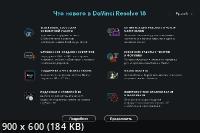

Here is an example: LICENSE foundry nuke_i 2021.1206 permanent uncounted Finally, there is a count of how many seats that license allows to run. nuke_i) and the version-limiter, then either an expiration date or the word permanent.

Next on that line is the word foundry, followed by the feature name (e.g.

The first line in a key block starts with the word LICENSE. You can also find more information about Nuke licensing from the following article: Hiero: hiero_i or nuke_i, nukex_i and nukestudio_i.Nuke Studio: nuke_i, nukex_i and nukestudio_i.The following license features are required, depending on how you launch Nuke: For further information about where to find your licences, please refer to the following article: Q100523: Where are Foundry Licenses installed on my machine? The first half of a license key is human-readable, so you can tell what the license can provide. Your license file is plain text and has a. The way in which Nuke is launched and the available license(s) determine what you can run, whether it be Nuke, NukeX, Nuke Studio, Nuke Assist, or Nuke Non-commercial. Each Nuke version installs independently of other installed versions, in its own version-named subdirectory. You can install as many Nuke versions on a machine as disk space allows. Trying to run a version of Nuke later than the license supports will result in license errors, such as: "Wrong product version, this license is for an older version." "Requested version not supported" Note: Before Nuke 7.0v1, a different type of licensing was used. There is a version-limiter in your license that allows you to run every version of Nuke built on or before that date, all the way back to Nuke 7.0v1. This article will explain which Nuke versions your Nuke, NukeX, Nuke Studio, Hiero, HieroPlayer and/or a Nuke Assist licences are valid for.


 0 kommentar(er)
0 kommentar(er)
